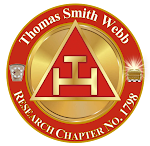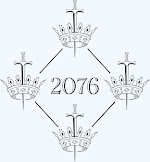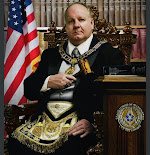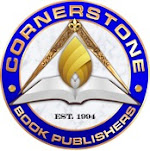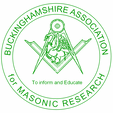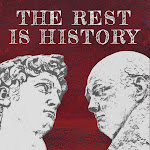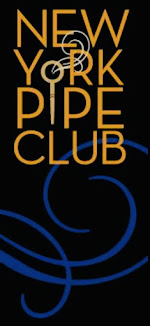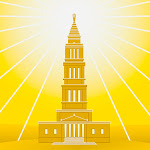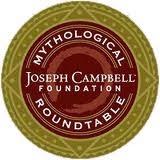I’m still catching up on What I Did on My Summer Vacation blogging and, since it’s been two months already, let me report on William O. Ware Lodge of Research’s long anticipated “Exploring the Role of Masonic Research Lodges in the 21st Century” conference in Lexington, Kentucky nine Saturdays ago. Produced with the assistance of Lexington Lodge 1, the Rubicon Masonic Society, the Philalethes Society, and others, this day of panel discussions addressed six topics that mostly were for consideration of the future of these peculiar lodges we love so much.
New Jersey Lodge of Masonic Research and Education 1786 was represented by Bro. Sal Corelli and myself. (He and I had been bumping into each other all summer, first at the Masonic Restoration Foundation in Ontario, then the John Skene Conference, and again in Kentucky.) I guess I was representing The American Lodge of Research and Civil War Lodge of Research also.
 |
| The banquet room. |
The night before the conference, we gathered at Spindletop Hall for Rubicon’s Thirteenth Annual Festive Board. We guests were sad to hear how keynote speaker John L. Cooper, Past Grand Master of California, wouldn’t be joining us, but our hosts adroitly surrogated MW David Cameron of Ontario. He presented a most encouraging talk—a true story of his lodge’s efforts to prove the provenance of a cherished gavel gifted by Rudyard Kipling. I am kicking myself now because I didn’t take notes. Seating was crowded in the banquet room and I wasn’t planning on continuing all this blogging, so I ruled against pressing my notebook into my salad and elbowing my unlucky neighbor to the right while jotting down details. Nor did I shoot photos.
 |
| MW David Cameron |
The Festive Board was enthralling. Not everyone knows how to do this but, believe me, if every lodge hosted a monthly Festive Board of this excellence, any worries of membership retention would dissolve. Great food, the toasts, the Good Fire ritual, the songs, the fellowship, prayer, the chain of union are ingredients of a cheerful time together that only can inspire more time together.
 |
| Rubicon Masonic Society |
The following morning, back at Spindletop Hall, was the conference. To ease everybody into the forward-leaning subjects, Bro. S. Brent Morris led the first talk, “The Historical Role of Research Lodges & Societies: Lessons from the Past.” It was a comprehensive review. Since you are reading this, I trust you have some knowledge of the history and purposes of research lodges—how Quatuor Coronati 2076 in London was the first and was devoted to debunking the myths and legends that long had passed for Craft history, followed by a few others in England and Ireland, and then several in the United States in the 1930s. The newest, I assume, is Virginia’s Blue Ridge Lodge of Research 1738, set to labor several months ago. I’ll omit all that chronology and instead highlight something he said about some of our earliest literature being expressions of historiography. We’ve all read Rev. James Anderson’s take on Masonic history in his 1723 book The Constitutions of the Free-Masons, and probably all scratched our heads wondering how anyone could begin Freemasonry’s story with Adam, the first man, but that, after all, is one understanding of our history, demonstrating a desire for insights into our past at the start of the grand lodge era.
 |
| MW David Cameron of Ontario. |
Bro. David Cameron, Past Grand Master of the Grand Lodge of Canada in the Province of Ontario, moderated the next discussion on “Modernizing Masonic Research: Embracing Technology and Digital Tools.” Tech is not my thing, to put it simply, so I was relieved to hear the talk was in language I understood. Cameron urged us all to spend the necessary funds to digitize our research and make it available on the web. Bro. Buckhorn reminded us that digital data are not the ultimate answer some may think, because data can be saved with technologies that inevitably will become obsolete, therefore inventorying physical documents is a must. The platform TeamReach was praised. Bro. Adam Kendall, the new Senior Warden at QC2076, summarized Artificial Intelligence thusly: “A.I. is a shrimp trawler. It scoops from the bottom of the ocean.” Take heed.
 |
Rubicon Masonic Society Bro. Adam Kendall of QC2076, Philalethes, SRRS, etc. fame. |
Next, Bro. Kendall had his own subject to moderate: “The Art of Masonic Research: Developing and Sharing High Quality Work.” Adam should know. As editor of Heredom, a Blue Friar, an author of masterpiece papers, president of Philalethes, and an Honorary Member of Rubicon, he spoke firmly of best practices in conducting research and in writing and presenting research. Objective quality-control, passion, and the “Five C’s of Historical Thinking”—Causality, Change Over Time, Complexity, Context, and Contingency—are secrets to good work, square work.
 |
| Bro. Andrew Hammer |


















